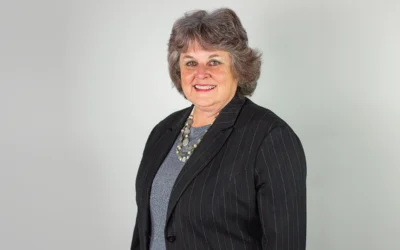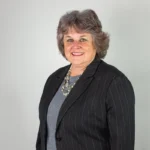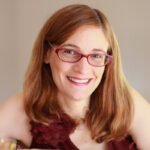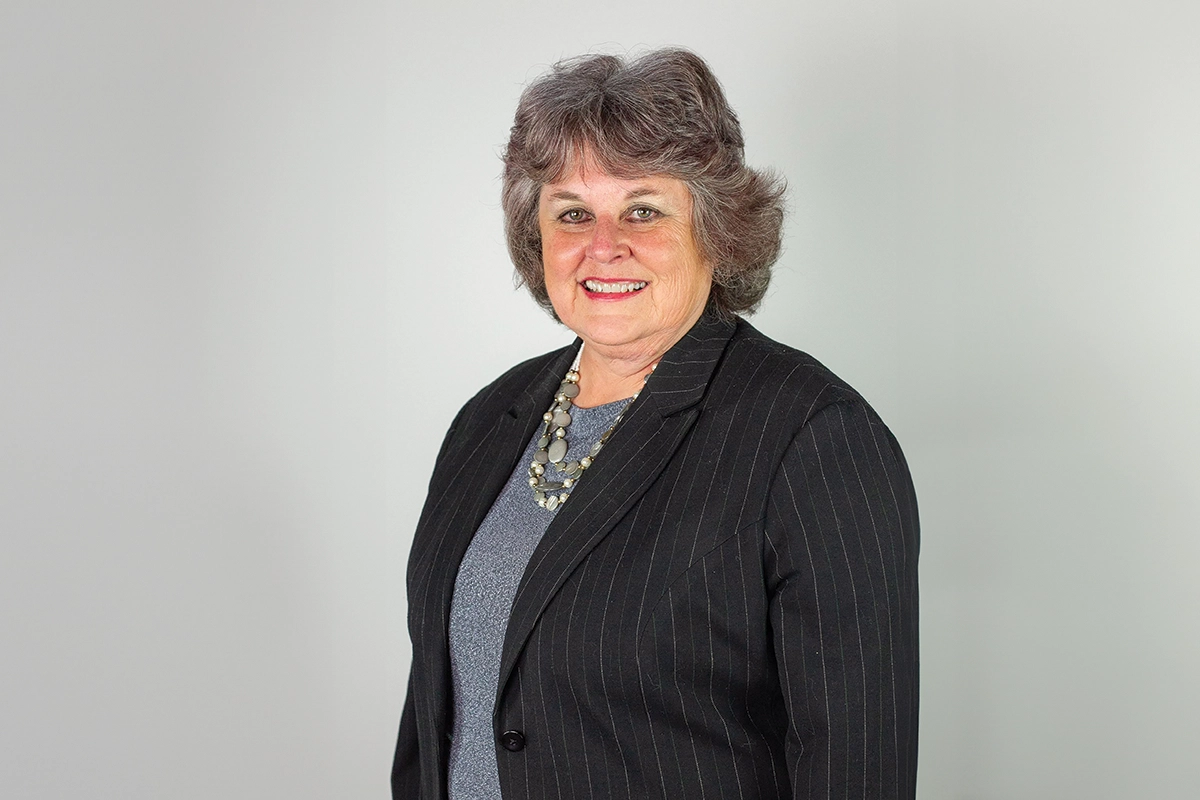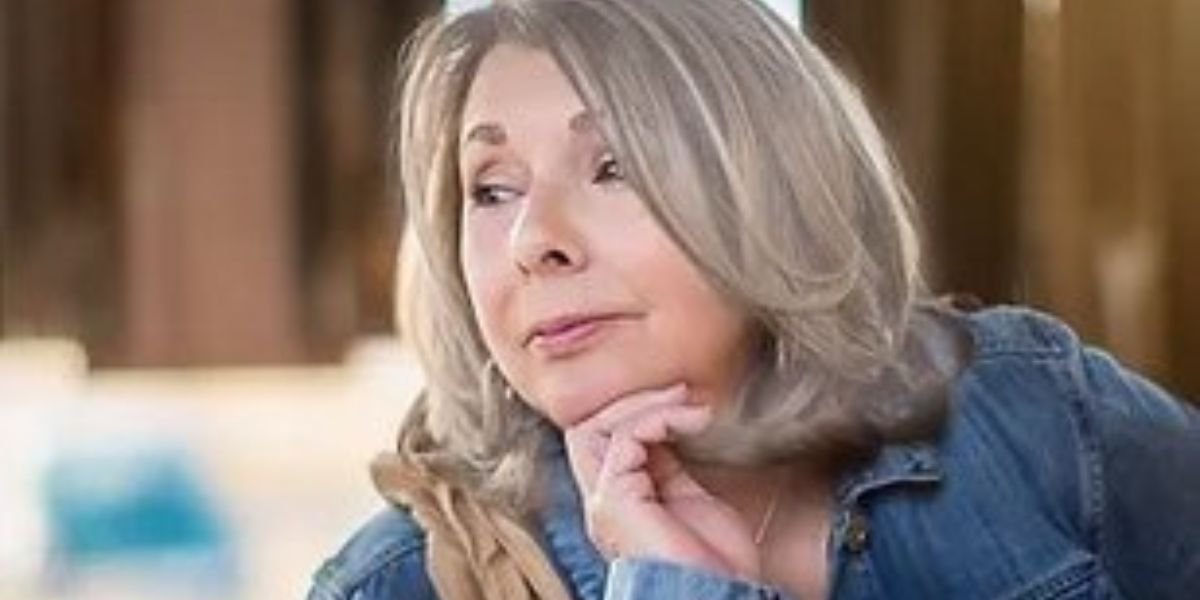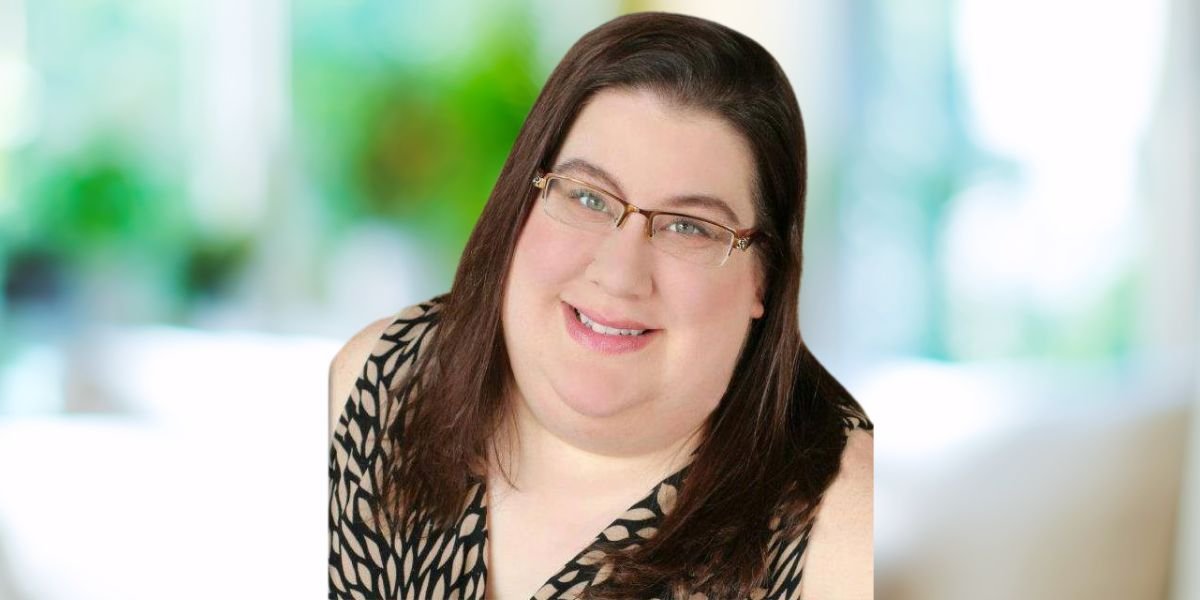Gina Conroy Uncovers the Journey of Storytelling and Mentorship
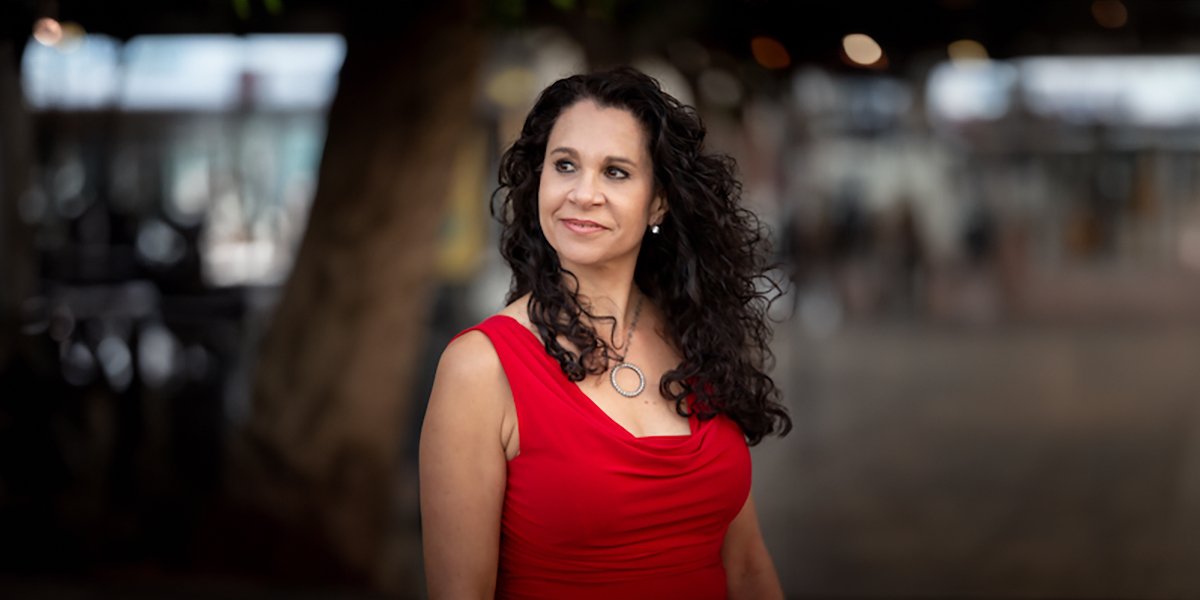
Photo: Gina Conroy, a passionate novelist and mentor, sharing her insights on storytelling and the writing journey. Photo By Nicolas Conroy
An Inspiring Conversation About Writing, Community, And The Power Of Every Voice
Gina Conroy shares her transformative journey as a writer, mentor, and author, emphasizing the importance of community and unlocking individual potential.
Gina Conroy embodies the spirit of creativity and resilience, proving that the journey of a writer can be as transformative as the stories they tell. From her early days of penning thoughts in a diary to becoming a published author, Gina has dedicated her life to unlocking the voices of others through mentorship and instruction. Her novels reflect a unique blend of humor, faith, and intricate storytelling that resonates with readers, making her an invaluable asset to the literary community.
In her latest works, “Digging Up Death” and the upcoming “Anxious for Love,” Gina delves into complex character dynamics and thought-provoking narratives that compel readers to reflect on their own lives. Her ability to weave together suspenseful plots with relatable themes showcases her gift for understanding the human experience. Through her engaging dialogues and richly developed characters, she invites us into a world where every story matters and where the journey toward self-discovery is fraught with both adventure and humor.
Mosaic Digest is proud to feature this insightful interview with Gina Conroy, where she shares her inspirations and the lessons learned along her journey. Her passion for writing and commitment to nurturing aspiring authors highlights the importance of community in the creative process. Whether you are an established writer or just beginning your literary pursuits, Gina’s insights will inspire you to embrace your unique voice and confidently share your stories with the world.
Gina Conroy’s creativity and dedication inspire writers to pursue their dreams and amplify their unique voices in the literary world.
Your journey from receiving your first diary in second grade to becoming a published author is inspiring. How did those early experiences shape your passion for storytelling, and what pivotal moments propelled you toward a career in writing?
Growing up, I didn’t have a voice. I observed the world around me, keeping my thoughts to myself, unsure if the world would welcome them. At eight years old, my diary became my safe space, allowing me to express myself freely—heart and soul—without judgment. As I grew, encouraging teachers helped build my confidence and inspired my creativity, validating that I indeed have a gift of writing. In high school, I found the courage to share my words publicly through the school newspaper, eventually leading me to study journalism in college.
Although I always loved fiction, I struggled with crafting a novel until post-college inspiration struck while I sat in church listening to a scripture I heard hundreds of times. That’s when I began my first book yet to be published. Joining a critique group opened my eyes to how much I had to learn—and set me on a path of learning. Attending writing conferences and getting to know wonderful writers, editors, and agents was invaluable. Because of their support, I didn’t quit when times got tough. Today, I’m a published novelist, writing coach, and tutor because of all my experiences, and I’ve taken the techniques and principles I learned as an author and created resources to help writers, young and old. My teaching began with a writing course called Release the Novel in You which is now a workbook available on Amazon and grew in 2020 when students were stuck at home during the pandemic. That’s when I developed more creative writing courses that I now teach to all ages online and through video format.
“My diary became my safe space, allowing me to express myself freely—heart and soul—without judgment.” – Gina Conroy
You’ve founded platforms like Writer…Interrupted to mentor busy writers. What motivated you to create these communities, and how have they impacted both your personal growth and the journeys of the writers you’ve mentored?
Years ago, as a young mother homeschooling four kids while managing a home and pursuing writing, I desperately sought advice from other “successful” writing parents. I was overwhelmed, to say the least. That search led me to create the Writer…Interrupted community, hoping to learn how to balance it all. I started blogging, connecting with other writers, and interviewing busy, successful authors who were “interrupted” to uncover their strategies. Over time, after interviewing hundreds of busy writers, Writer…Interrupted became more than just a blog—it became a community where interrupted writers, like me, could share struggles and insights on how to balance writing with other life responsibilities like homeschooling, caretaking, and health. We blogged insights and tips to encourage ourselves and other writers who were struggling to do it all. Little did I know back when I had a friend write the “caretaking and writing” column that I would be in the thick of it, ten years later.
“Balance isn’t about doing it all at the same time—it’s about focusing on what matters most in each season of life.” – Gina Conroy
Through this journey, I’ve grown as both a writer and mentor, realizing every season of life brings its challenges, but it’s the people who are there with you, helping you through that makes the difference. I haven’t had one mentor that carried me through the years, like some writers. Instead, I’ve had different people show up with what I needed at the right time to get me to the next level. That’s what I strive to be for new writers.
Balancing multiple roles—author, teacher, writing coach, mother, and caregiver—requires exceptional time management and dedication. What strategies have you developed to maintain this balance, and how do these roles influence and enrich your writing?
The biggest strategy I can offer is to change your perspective about life balance and trying to do it all. As I’ve matured, I’ve realized balance isn’t about doing it all at the same time—it’s about focusing on what matters most in each season of life. After my divorce and then becoming a caregiver to my mom with dementia, I struggled emotionally and financially. Traditional planning methods didn’t work for me, especially as I’ve come to understand my neurodivergent tendencies. But I knew things were out of balance in my life. I could feel it in my body.
I created the Life Balance Workbook to track the areas of my life that mattered most to me—career, family, finances, personal growth, spirituality, friends—to evaluate if the time I was giving certain activities aligned with my priorities, and if it helped or hurt my mental and spiritual health. Seeing where I was spending my time helped me reflect on what was missing and most important during a certain season of life. Sometimes I needed to spend more time on family care, so I had to find creative ways to meet my other needs. Sometimes that looked like recording a social media video while taking a walk which combined two needs in one. Dancing and spending time with friends also hit the health and social categories.
The biggest thing I’ve learned is that life balance isn’t like a perfectly even scale—it’s more like a teeter-totter. Sometimes, one side carries more weight—whether it’s family, work, or personal growth—and you have to lean in, shifting your focus to keep from crashing. Other times, you need to double up on the other side, adding moments of rest, creativity, or self-care to keep things from tipping too far. It’s a constant back-and-forth, adjusting to the season you’re in, not striving for perfect balance but for a rhythm that keeps you moving forward without burning out.
In your novels “Digging Up Death” and “Anxious for Love,” which you plan to release summer 2025, you delve into complex character dynamics and suspenseful plots. Can you share insights into your creative process for developing such intricate narratives and the challenges you face in bringing them to life?
My process is different for every book, but my premise usually comes from a “what if?” idea. In Digging Up Death, I was homeschooling. While studying ancient Egypt, we uncovered the fascinating story of Hatshepsut, a female pharaoh who ruled as a man during Egypt’s golden age. But history tried to erase her—her mummy was missing, her name and legacy literally chiseled away. Why? Did Thutmose III, too young to rule at the time, seek revenge? That question sparked my novel Digging Up Death, revealing that family drama is as old as time. Then in 2005, renowned Egyptologist Zahi Hawass launched a search for Hatshepsut’s lost mummy. After testing two unidentified mummies in the Cairo Museum, experts declared they had found her. But what if they were wrong? That’s where my premise I started, then my characters took over the plot like they always do.
My characters often originate from my own life at the time. While the plot is entirely fictional, I draw from my real emotions and internal struggles. I also pour aspects of myself into multiple characters. Those who know me might even recognize glimpses of themselves. However, no character is entirely based on me or anyone I know—they’re compilations, drawing from various experiences and traits to suit the plot and character needs.
In my upcoming novel, Anxious for Love—written ten years after my divorce—I pour all my frustration about online dating and why people keep attracting the same toxic relationships. It’s a romantic comedy that delivers laugh-out-loud humor (so I’ve been told) and a poignant plunge into the chaotic modern dating world. Like me and so many others, my main character is down on love, but she’s thrown together with an Australian dating coach. (True story for another time.) Together, they embark on a six-week mission to find her love. Cue one catastrophic and hilarious date after another, a splashy Hollywood scandal, and their own crippling anxieties about love, and it’s a recipe for disaster… or maybe the perfect match.
Beneath the humor, Anxious for Love explores something deeper: how our childhood wounds and attachment styles shape our relationships. Most of us aren’t aware that our attachment insecurities keep attracting the wrong partners, trapping us in a vicious cycle of repeating the same dysfunctional relationships—just with different people. That’s the journey I’ve been on these last ten years, so the story was easy to write. Anxious for Love is about breaking that cycle. As undeniable chemistry sparks between Charlee and Maxwell, they must confront their deepest fears, heal from the past, and learn to trust—not just each other, but themselves. Like we all need to do. Real love isn’t just about finding the right person—it’s about being ready to receive love when the right person shows up.
As someone deeply involved in teaching and coaching, what common challenges do aspiring writers face today, and how do you guide them in overcoming these obstacles to unlock their full potential?
Aspiring writers today face many of the same challenges they always have—finding time to write, battling self-doubt, and navigating the ever-changing publishing landscape. Beyond just finishing a book, there’s the question of how to get noticed, whether to pursue traditional or indie publishing, and where to invest in marketing.
The biggest obstacle I see as a writing coach is time—or rather, the excuse of not having enough of it. I’ve used that excuse myself, but I’ve also watched single parents with full-time jobs finish novels before dawn or late at night. The difference? They push past the excuses and get to work. I’ve used that excuse the last twenty years and watched writers I started with publish twenty plus books while I have five. Granted, I’ve been through some difficult life circumstances where I had to put writing in the back seat as I navigated uncertain roads, but 2024 was the year I ditched the excuses and wrote two novels. One in two months, the other in six weeks, so I know it can be done. It just takes commitment, a plan, and accountability. As a writing coach, I help writers uncover their limiting beliefs, set realistic goals, and stay accountable through one-on-one coaching and editing sessions. So in essence, I help people move past their excuses and walk them through finishing their novel.
Your journey from receiving your first diary in second grade to becoming a published author is inspiring. How did those early experiences shape your passion for storytelling, and what pivotal moments propelled you toward a career in writing?
Growing up I didn’t have a voice until my diary became my safe space at eight, allowing me to express my deepest thoughts without judgment. As I grew, encouraging teachers helped build my confidence and inspired my creativity, validating that I indeed had a gift of writing. In high school, I found the courage to share my words publicly through the school newspaper, eventually leading me to study journalism in college. Although I always loved fiction, I struggled with crafting a novel until post-college inspiration struck while I sat in church listening to a scripture I heard hundreds of times. That’s when I began my first book. Joining a critique group and attending writing conferences opened my eyes to how much I had yet to learn, and the support from fellow writers, editors, and agents kept me going through tough times. Today, I’m a published novelist, writing coach, and tutor because of all my experiences.
My teaching journey began with Release the Novel in You, a course that evolved into a workbook on Amazon and later expanded into creative writing classes during the pandemic. These experiences have driven me to empower writers of all ages to discover and refine their unique voices.
You’ve founded platforms like Writer…Interrupted and Release the Writer in You to mentor busy writers. What motivated you to create these communities, and how have they impacted both your personal growth and the journeys of the writers you’ve mentored?
As a young mother homeschooling four kids while pursuing writing, I searched for advice from “successful” writing parents but found little guidance. That led me to create Writer…Interrupted, not because I had the answers, but because I needed them. I started blogging, connecting with other writers, and interviewing busy authors to uncover how they balanced writing with life’s demands. Over time, it became more than a blog—it became a community where writers navigating homeschooling, caretaking, and other challenges could share struggles and support one another. Ironically, I never imagined I’d be in the thick of it myself years later, needing to reread the “caretaking and writing” column written by a friend.
Through this journey, I’ve grown as both a writer and mentor, realizing every season of life brings its challenges, but it’s the people who are there with you, helping you through that makes the difference. I haven’t had one mentor that carried me through the years, like some writers. Instead, I had different people show up with what I needed at the right time to get me to the next level. That’s what I strive to be for new writers.
Balancing multiple roles—author, teacher, writing coach, mother, and caregiver—requires exceptional time management and dedication. What strategies have you developed to maintain this balance, and how do these roles influence and enrich your writing?
The biggest strategy I can offer is to change your perspective about life balance and trying to do it all. As I’ve matured, I’ve realized balance isn’t about doing it all at the same time—it’s about focusing on what matters most in each season of life. After my divorce and becoming a caregiver for my mom with dementia, I struggled emotionally and financially. Traditional planning methods didn’t work for me, especially as I’ve come to understand my neurodivergent tendencies. But I knew things were out of balance in my life. I could feel it in my body.
I created the Life Balance Workbook to track the key areas that mattered to me—career, family, finances, personal growth, spirituality, and friends. Seeing where I spent my time helped me recognize what was missing and adjust accordingly. Sometimes, my family needed more attention, so I found creative ways to meet other needs—like recording social media videos while walking or combining dancing with social time.
The biggest lesson? Balance isn’t a perfectly even scale—it’s a teeter-totter. At times, one side carries more weight—whether it’s family, work, or personal growth—and you have to lean in, shifting your focus to keep from crashing. Other times, you need to counterbalance with rest and creativity. It’s a constant back-and-forth, adjusting to the season you’re in, not striving for perfect balance but for a rhythm that keeps you moving forward without burning out.
In your novels “Digging Up Death” and “Anxious for Love,” which you plan to release this summer 2025, you delve into complex character dynamics and suspenseful plots. Can you share insights into your creative process for developing such intricate narratives and the challenges you face in bringing them to life?
My creative process varies with each book, but it always starts with a “what if?” In Digging Up Death, that question arose while homeschooling my kids and studying ancient Egypt. We discovered the story of Hatshepsut, a female pharaoh erased from history—her name chiseled away, her mummy missing. Why? Did Thutmose III, too young to rule at the time, seek revenge? That mystery sparked my novel. Then in 2005, renowned Egyptologist Zahi Hawass launched a search for her lost mummy. What if they found the wrong one? That question fueled my plot, but as always, my characters took over.
My characters often stem from my own emotions and struggles, though none are exact replicas of myself or people I know. They’re compilations, shaped to fit the story’s needs. Anxious for Love, written ten years after my divorce, is a romantic comedy born from my frustrations with online dating and the patterns that keep people stuck in toxic relationships. My main character, like so many people, is disillusioned with love—until she’s paired with an Australian dating coach (true story for another time). Their six-week mission to find her love leads to disastrous dates, a Hollywood scandal, and undeniable chemistry.
Beneath the humor, Anxious for Love digs into a deeper truth: how childhood wounds and attachment styles shape our relationships. Many don’t realize they’re caught in a cycle, attracting the wrong partners over and over. I’ve been on that journey myself, which made this story easy to write. At its heart, Anxious for Love is about breaking the cycle—learning to heal, trust, and become ready for real love.
As someone deeply involved in teaching and coaching, what common challenges do aspiring writers face today, and how do you guide them in overcoming these obstacles to unlock their full potential?
Writers today face many challenges, from finding time to write to navigating an ever-changing industry. Beyond just finishing a book, there’s the question of how to get noticed, whether to pursue traditional or indie publishing, and where to invest in marketing. The biggest obstacle I see as a writing coach is time—or rather, the excuse of not having it. I’ve used it myself, but I’ve also seen single parents with full-time jobs work on their novels before dawn or late at night. The difference? They push past the excuses and write. I spent years watching others publish while I put writing on the back seat for life’s challenges. But in 2024, I ditched the excuses and wrote two novels—one in two months, the other in six weeks. It can be done. And I help people move past their excuses and walk them through finishing their novel.

